Traditional and authentic Korean side dishes (banchan) are delicious vegetable small plates served with main meals. With a few staple ingredients, fresh vegetables and these easy-to-follow recipes, you’ll be making Korean banchan in no time!
Jump to:
What is Banchan?
“Banchan” in Korean translates to side dishes.
If you’ve ever had the pleasure of dining in a Korean restaurant or perhaps been invited over for dinner in a traditional Korean home, you would have no doubt been presented with a meal that started with a whole bunch of small plates.
For most people, our first Korean cuisine experience would have been the Korean BBQ, and if you’ve ever wondered what all the sides are at Korean BBQ, well, they are called banchan.
Banchan, although served before the main fare, is not considered to be an appetiser or an entrée that is to be finished before you move onto the main dish. Instead, these Korean side dishes are there to complement and enhance the overall meal.
They are small in serving size as there are many other banchan on the table, and they are communal. What I love most about banchan is that it can be replenished throughout the meal and that restaurants do not charge for these side dishes.
The most widely eaten banchan of all is the world renowned napa cabbage kimchi. This fermented Korean side dish flies the flag for Korean cuisine and is abundantly available all around the world.
While not traditional, many who celebrate Chinese New Year crave for something different to eat during the 15 days of festivities. Apart from the significant days, you can try your hand at Korean for the purposes of catching up with family and friends within those 2 weeks.
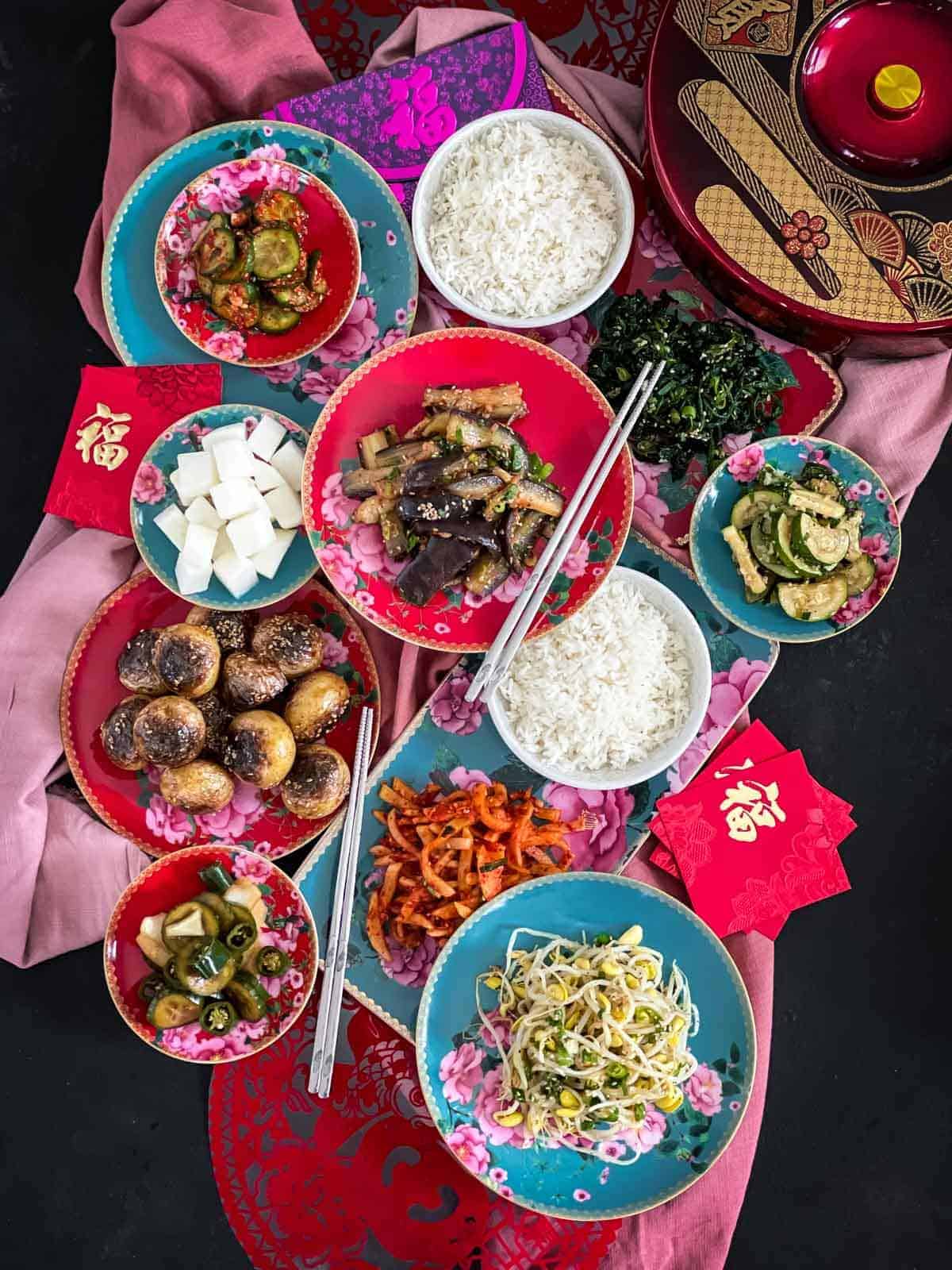
Why Does Korean Food Have So Many Side Dishes?
Koreans are one of the highest consumers of vegetables per capita. This stemmed from the fact that Koreans were influenced by strict Buddhist practices in the era of the Three Kingdoms (57 BC to 668 AD). This meant that no meat could be consumed for almost 700 years.
As vegetables became the only form of food, Koreans became adept at creating a myriad of delicious tasting dishes. Combine that with the harsh Korean winters; they also had to learn to find a way to preserve their vegetables so that they would last them during the cold months.
They had to learn about the process of fermentation.
Meat is, of course, a significant part of Korean cuisine today, especially pork belly. But as the generations continued, they have become so accustomed to eating vegetables that it has continued until modern times.
Nevertheless, Koreans still need the presence of an abundance of banchan, and a Korean meal would simply be incomplete without them.
How Many Korean Side Dishes to Serve?
Korean custom dictates that serving an even number of Korean side dishes is bad luck. Hence there is usually an odd number of banchan on the dinner table.
The table setting is named after the number of Korean side dishes. 3 cheop (삼첩), 5 cheop (오첩), 7 cheop (칠첩), 9 cheop (구첩).
Interestingly enough, Korean royal cuisine requires 12 banchan. It is the only time an even number of banchan is served.
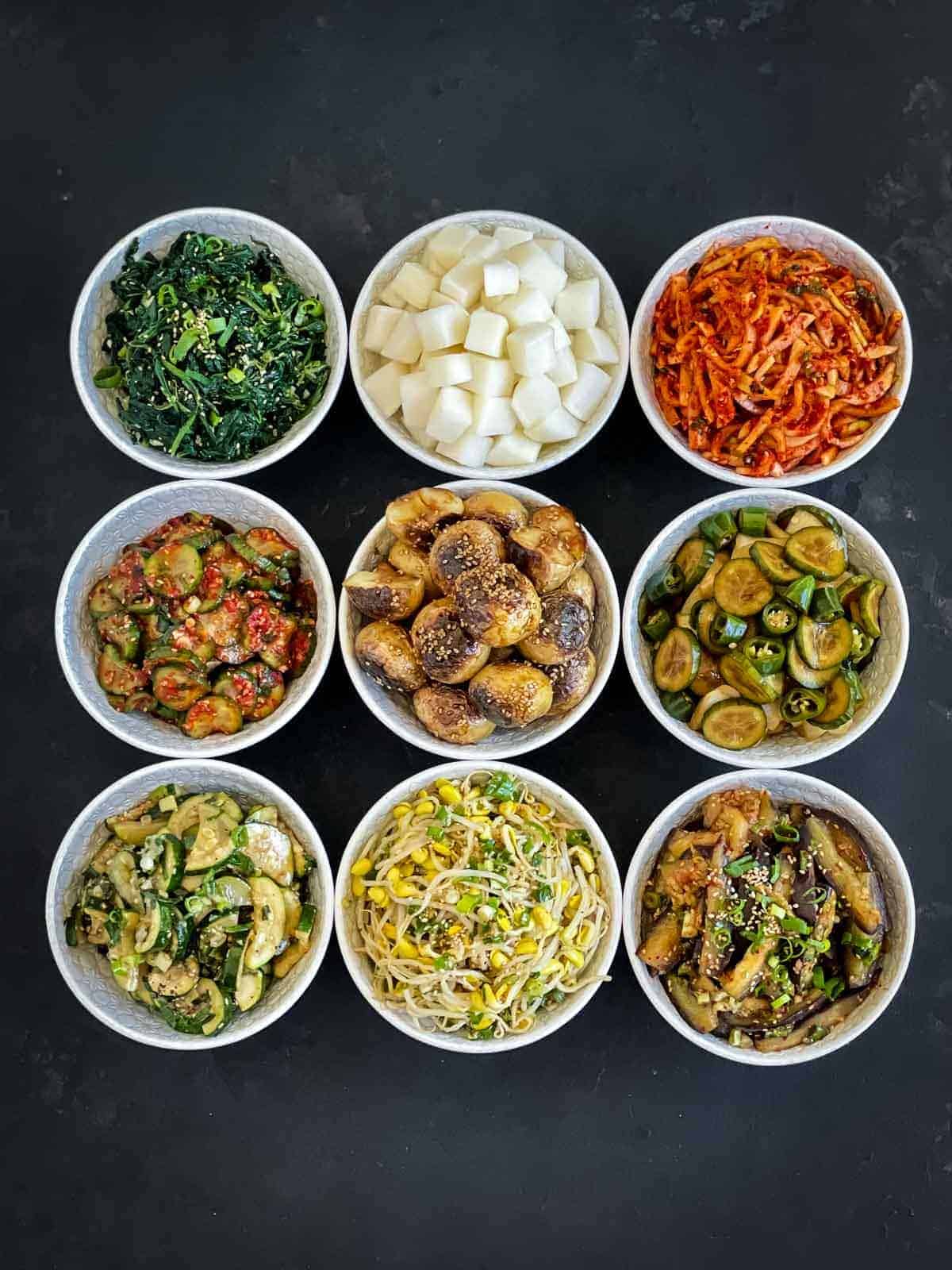
What Are the Different Side Dishes of Korean Cuisine?
There are literally hundreds and thousands of different kinds of Korean side dishes recipes. As you can imagine, as we progress in time, we inevitably come across new types of vegetables, new ways to prepare food, and we become more creative in our recipes.
Koreans, however, are very traditional, so the basis of a lot of their side dishes remain the same. Nevertheless, there are a few side dishes that are staples.
For example, kimchi makes an appearance at every meal, no matter what Korean meal you’re having. The other popular side dishes are listed below.
There are some generic categories that banchan falls under, which would give you a guide into understanding banchan recipes.
Kimchi (김치)
Contrary to popular belief, kimchi does not refer to the one napa cabbage side dish we are all accustomed to eating. Kimchi actually refers to vegetables that have been salted and fermented. There are hundreds of types of kimchi recipes using many different types of vegetables.
Kimchi is traditionally fermented in earthenware pots and stored inground so that it is not subjected to the harsh winters, causing them to freeze and keep them cool enough so that the fermentation process isn’t unnecessarily accelerated.
Namul (나물)
This style of banchan refers to vegetables that are blanched, steamed or marinated. These are seasoned with Korean staples such as green onion, sesame oil, sesame seeds, minced garlic, salt, sugar, soy sauce and gochugaru (Korean red pepper flakes).
Bokkeum (볶음)
These banchan recipes refer to stir fried side dishes with some kind of sauce such as fish sauce and soy sauce.
Jorim (조림)
Jorim refers to side dishes that go through a boiling or braising process in some sort of a sauce. The dish is simmered until the sauce thickens and is fully absorbed by the vegetables.
Pickled
Oddly enough, there doesn’t seem to be a collective name for Korean side dishes that are pickled, even though there are so many recipes out there.
These vegetables go through a quick pickling process overnight when vinegar is introduced. They usually have a shelf life of about 2 weeks if stored in an airtight container in the refrigerator.
What Are Some of The Most Popular Korean Side Dishes?
Korean cuisine is very much a cuisine we love to eat, and learning to make traditional Korean dishes at home is something we should all try and do more of.
Although I have to admit, I found it intimidating at first but the idea of serving up homemade side dishes to my family and friends was very appealing.
So, apart from kimchi, I decided to tackle 1 banchan at a time, and I selected some of my favourites. As I made them, I realised that they all fundamentally have a similar starting point, and they were not difficult at all!
In fact, Korean side dishes recipes are quite easy, and it was so much fun serving these up.
Korean Soybean Sprout Side Dish – Kongnamul Muchim (콩나물 무침)
1/14
Soybean sprouts are very popular in Korean cuisine. This side dish is done in 10 minutes, subtle in flavour, and you can make a spicy or non-spicy version. It is light, slightly crunchy and well-seasoned.
Korean Cucumber Salad – Oi Muchim (오이무침)
2/14
A staple in the repertoire of Korean side dishes, this Korean cucumber salad (oi muchim) is incredibly easy to make with no cooking required. Spicy, aromatic and crunchy, watch it get devoured in seconds!
Korean Bellflower Root Side Dish – Doraji Muchim [도라지무침]
3/14
Doraji Muchim is calling your name! This Korean side dish bursts with flavour, featuring crunchy bellflower root, tangy vinegar, and a fiery kick.
Korean Braised Potatoes – Gamja Jorim (감자조림)
4/14
What could be more tantalising than sweet and sticky baby potatoes braised to absolute perfection? This Korean braised potato side dish is slightly charred and crispy on the outside while soft and warm on the inside.
Korean Zucchini Side Dish – Hobak Bokkeum (호박 볶음)
5/14
What is there not to love about a 10-minute cooked side recipe? This stir-fried Korean zucchini side dish (hobak bokkeum) is sweet and tender with quintessential Korean ingredients such as garlic, sesame seeds and scallions.
Korean Braised Lotus Roots – Yeon Geun Jorim [연근조림]
6/14
This Korean lotus root recipe is easy to make at home with only a few ingredients and will tantalise your tastebuds! Sweet and sticky with a slight crunch, it is incredibly moreish!
Korean Radish Salad – Musaengchae (무생채)
7/14
One of the most popular Korean side dishes, this Korean radish salad (musaengchae) is incredibly moreish! Crunchy and spicy, it is so easy to make at home. Once you start, it’s very hard to stop!
Korean Steamed Eggplant Side Dish – Gaji Namul (가지 나물)
8/14
Whipped up in under 10 minutes, this healthy and flavoursome Korean steam eggplant side dish is calling your name! Gaji namul is a popular Korean side dish, and it’s easy to see why. Lip smackingly delicious!
Korean Pickled Radish – Chicken-mu (치킨무)
9/14
Korean pickled radish (chicken-mu) is an incredibly popular Korean side dish or banchan that is served up in almost all Korean restaurants around the world. Learn how to make this at home so you can have it anytime!
Korean Dried Pollock with Gochujang – Bugeopo Gochujang Muchim [북어포 고추장무침]
10/14
Indulge in the perfect harmony of the rich umami flavours of the dried pollock tossed in the sticky and spicy goodness of gochujang. Best Korean banchan in town!
Korean Spinach Side Dish – Sigeumchi Namul (시금치나물)
11/14
A 10-minute recipe, this Korean spinach side dish (sigeumchi namul) is vegan and plant-based and ever so delicious—a must-have Korean side dish to add to the long list of traditional banchan.
Korean Potato Salad – Gamja Salad (감자 샐러드)
12/14
Creamy, luscious, and ever so fluffy, this Korean potato salad is like no other Korean banchan. The perfect accompaniment and palate cleanser for Korean BBQs or simply to have on its own.
Korean Pickles in Soy Sauce – Jangajji (장아찌)
13/14
Need some Asian inspired pickles to give some variety? These Korean pickles in soy sauce brine, commonly known in Korea as jangajji, may just be precisely what you’re looking for. Sweet, umami, salty and spicy, it is a pickling recipe worth keeping!
Asian Chive Kimchi – Buchu Kimchi [부추김치]
14/14
Love the seamless blend of these fresh and bitey Asian chives with the familiar flavours of Korean gochugaru. No fermentation required and simply delicious!
Frequently Asked Questions
Of all the chopsticks in Asian culture, the Korean chopsticks are vastly different from the others. Korean chopsticks are made of metal, well, in modern times, stainless steel.
They are flat rather than rounded, heavier than their wooden or bamboo counterparts, and are a bit slippery.
The true reason Korean chopsticks are metal is a little unknown and filled with conjecture and even folklore. Some say that silver chopsticks were made for the nobility as they would change colour if their food was poisoned and therefore was a reliable warning tool.
Metal chopsticks have been around for quite some time as it was found in the tomb of King Muryeong of Baekje, who died in 523. Many people adopted silver or gold chopsticks in the days of old as it was a show of one’s wealth.
The shelf life of Korean side dishes differs, depending on how it is prepared. For example, fermented vegetables such as kimchi can last up to almost 9 months due to the preparation process.
This is because the fermentation process continues during this time, albeit at a much slower rate.
Quick pickled vegetables will last in an airtight container in the refrigerator for up to 2 weeks. Other fresh vegetable banchan, be it raw, braised or seasoned, can last about 2-4 days in the refrigerator. This varies because some vegetables are simply more durable than others.
Banchan is meant to be consumed at room temperature. Therefore, if you have pre-made banchan in the refrigerator, remove the portion you need and allow it to come to room temperature before serving.
Hundreds and thousands! There is not a definitive number, and nobody would really know. New and creative banchan recipes continue to evolve every day as we experiment with new ideas, vegetables and cooking methods.
I hope this has inspired you to try making some Korean banchan at home. Considering some of them only take 10 minutes, perhaps you can start with those.
They are also incredibly healthy and a great way to introduce vegetables to the dinner table in a different way. Enjoy them all!
That’s all!
More Salad Recipe Collections
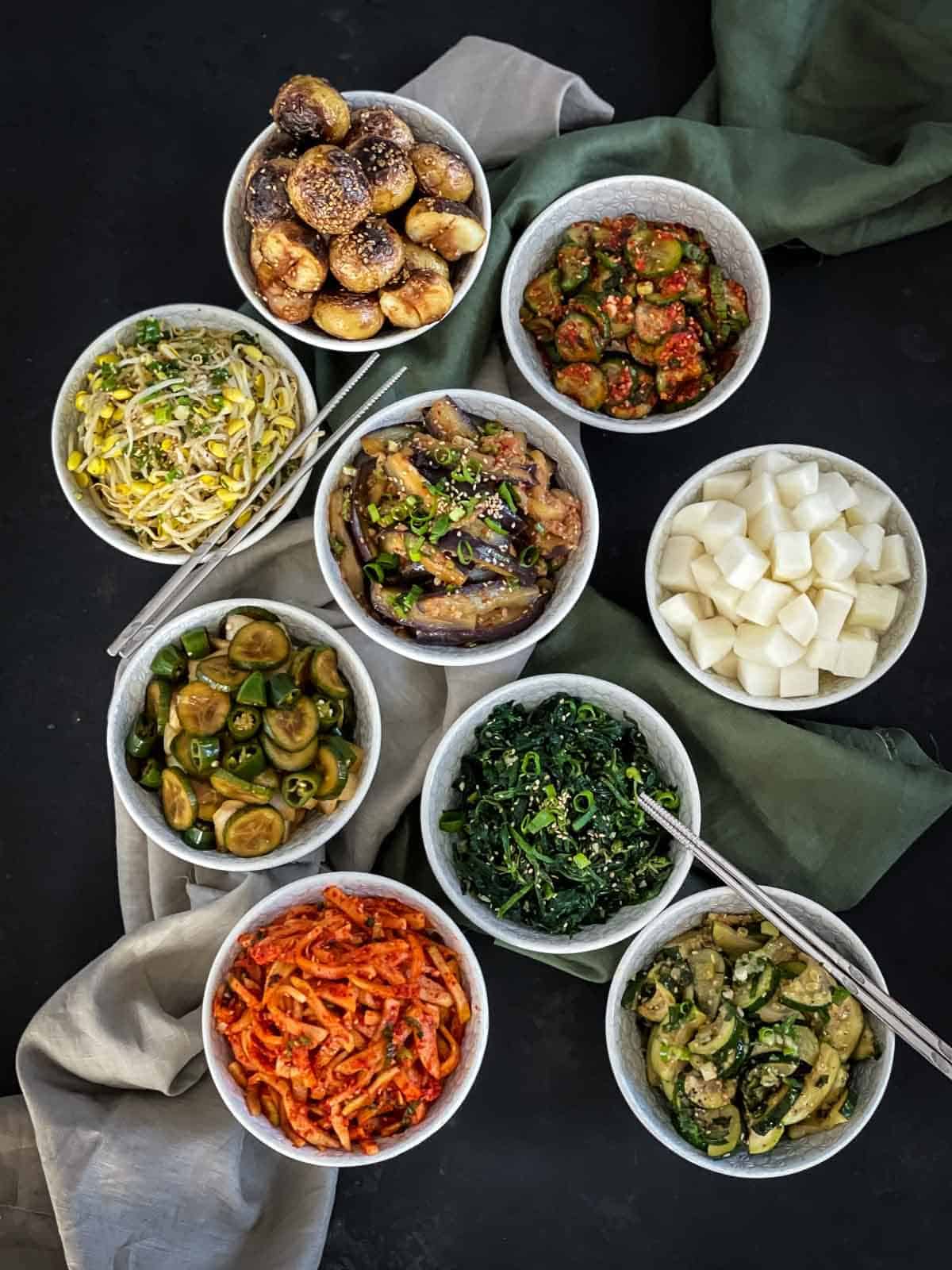
Follow us on Facebook, Pinterest, Instagram and Twitter for the latest updates!
Disclaimer: This site contains affiliate links to products. We may receive a commission for purchases made through these links at no additional cost to you.


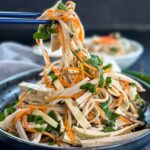



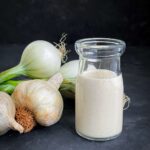







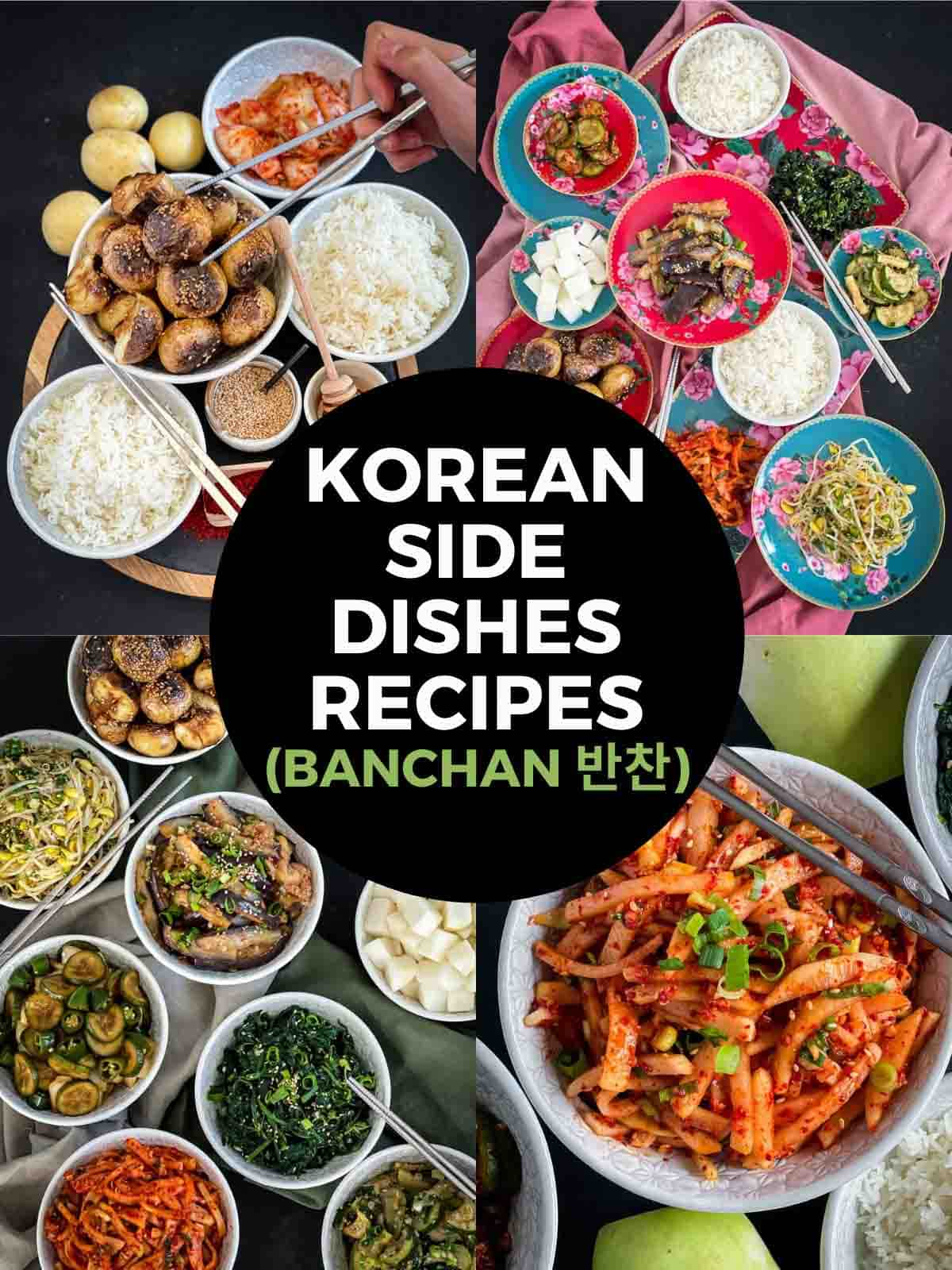
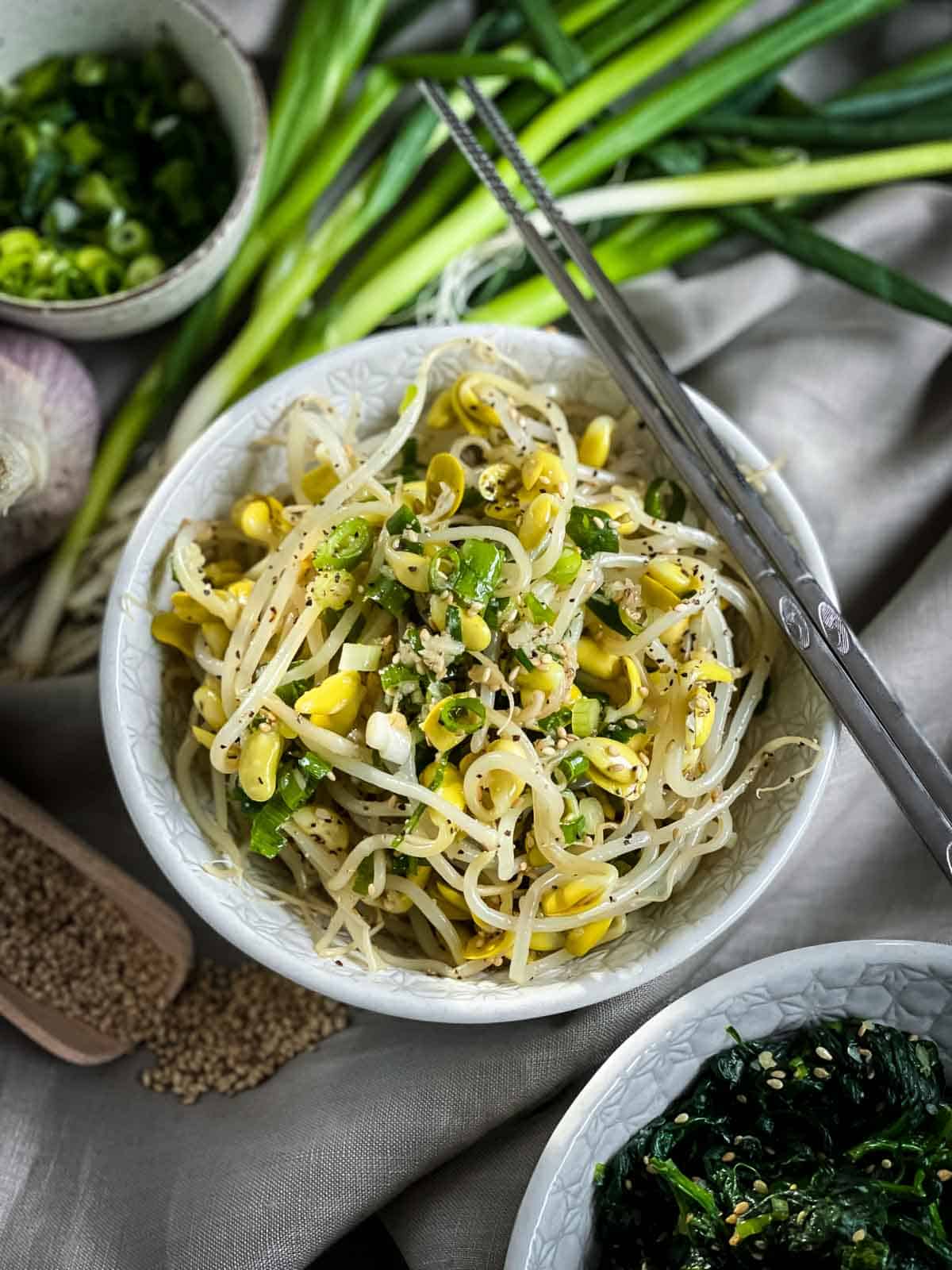
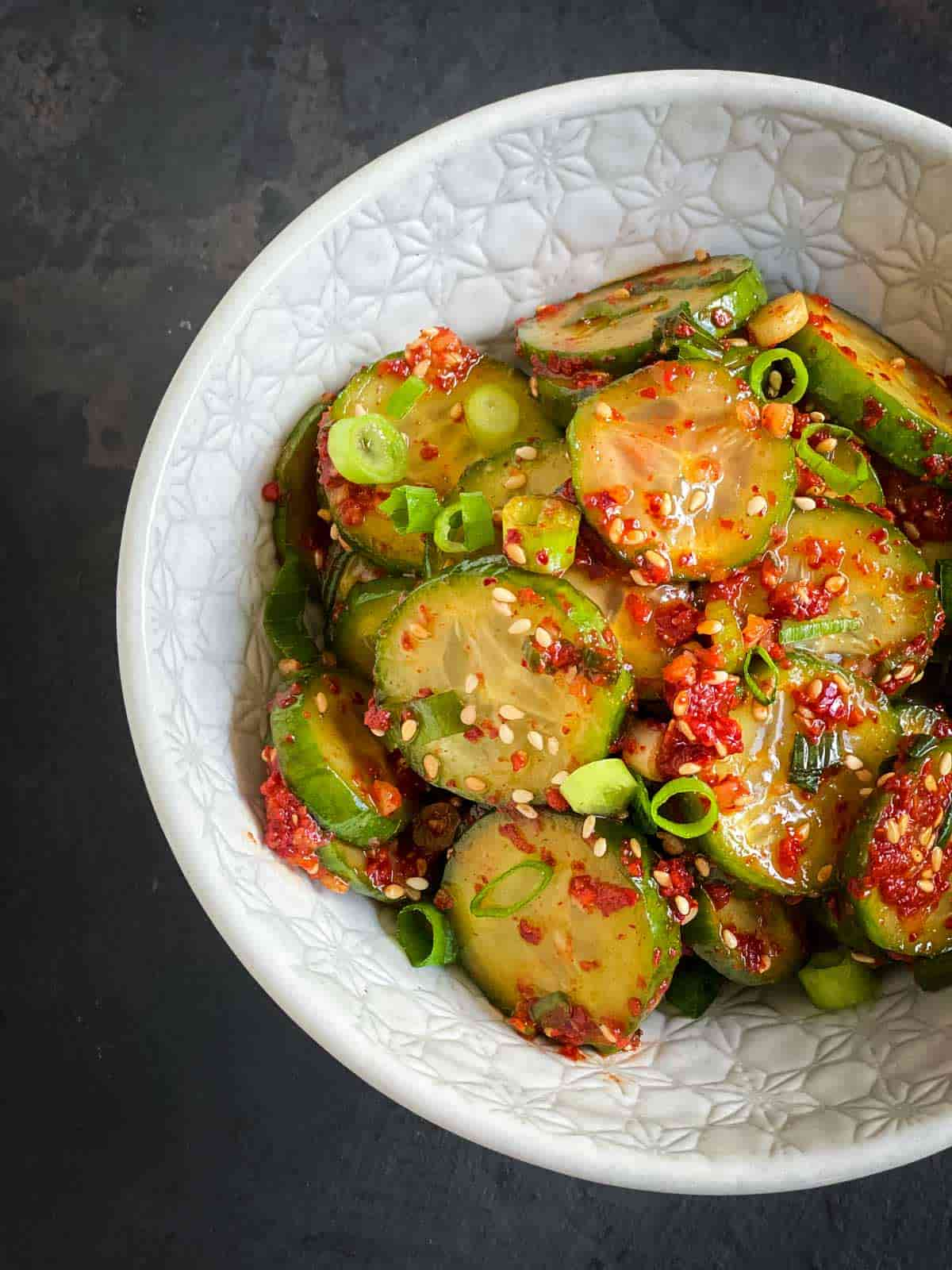
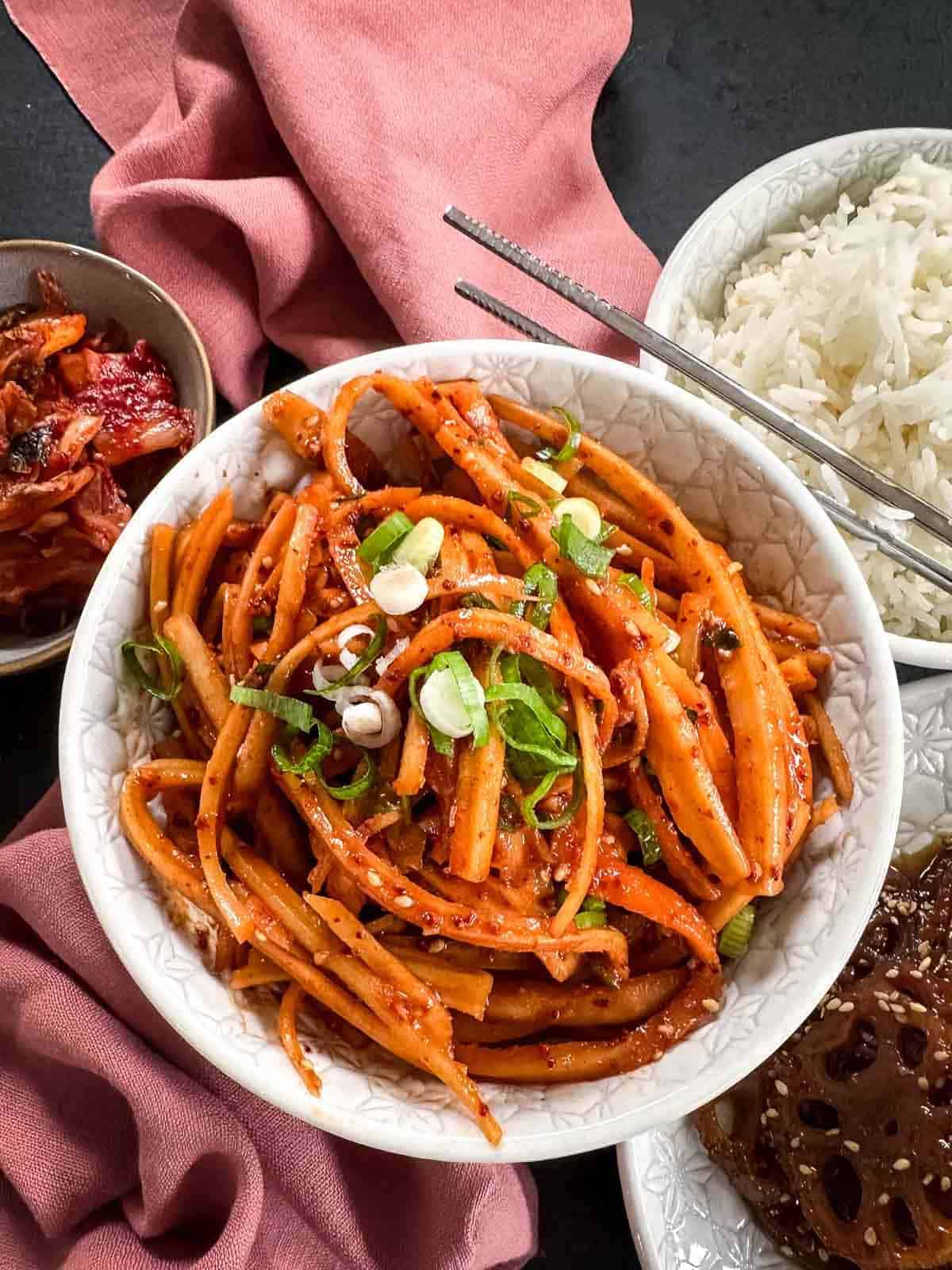
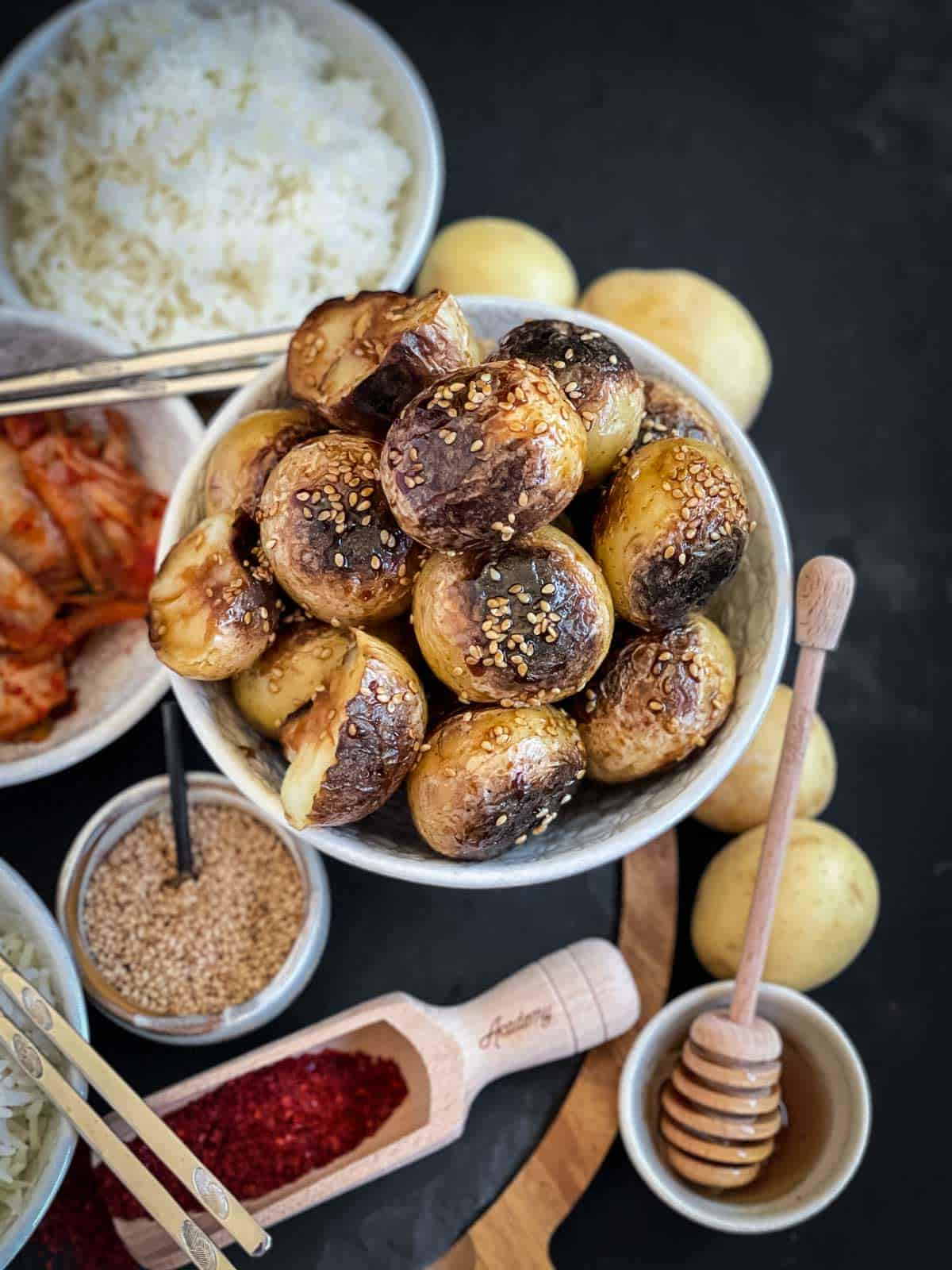
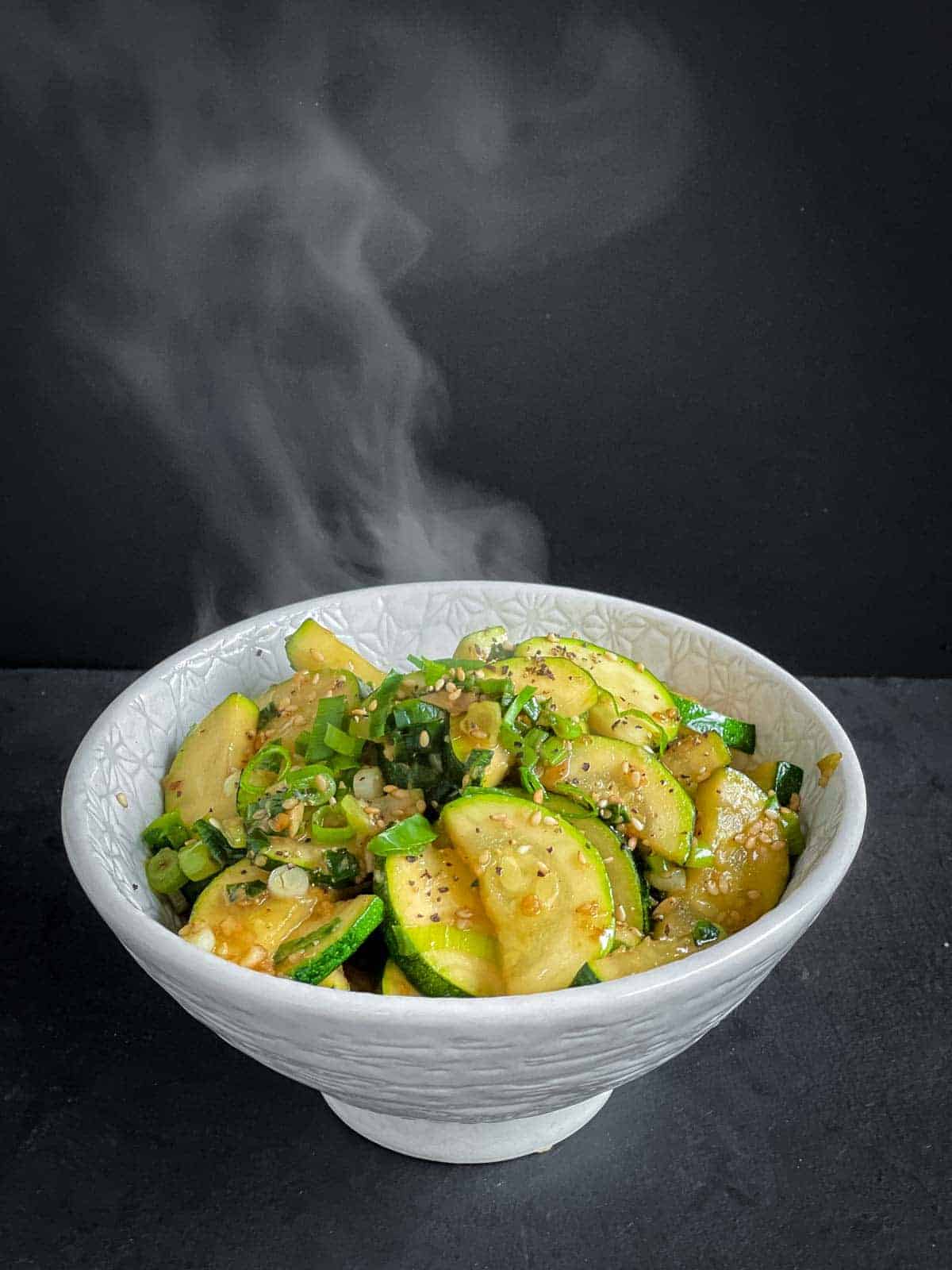
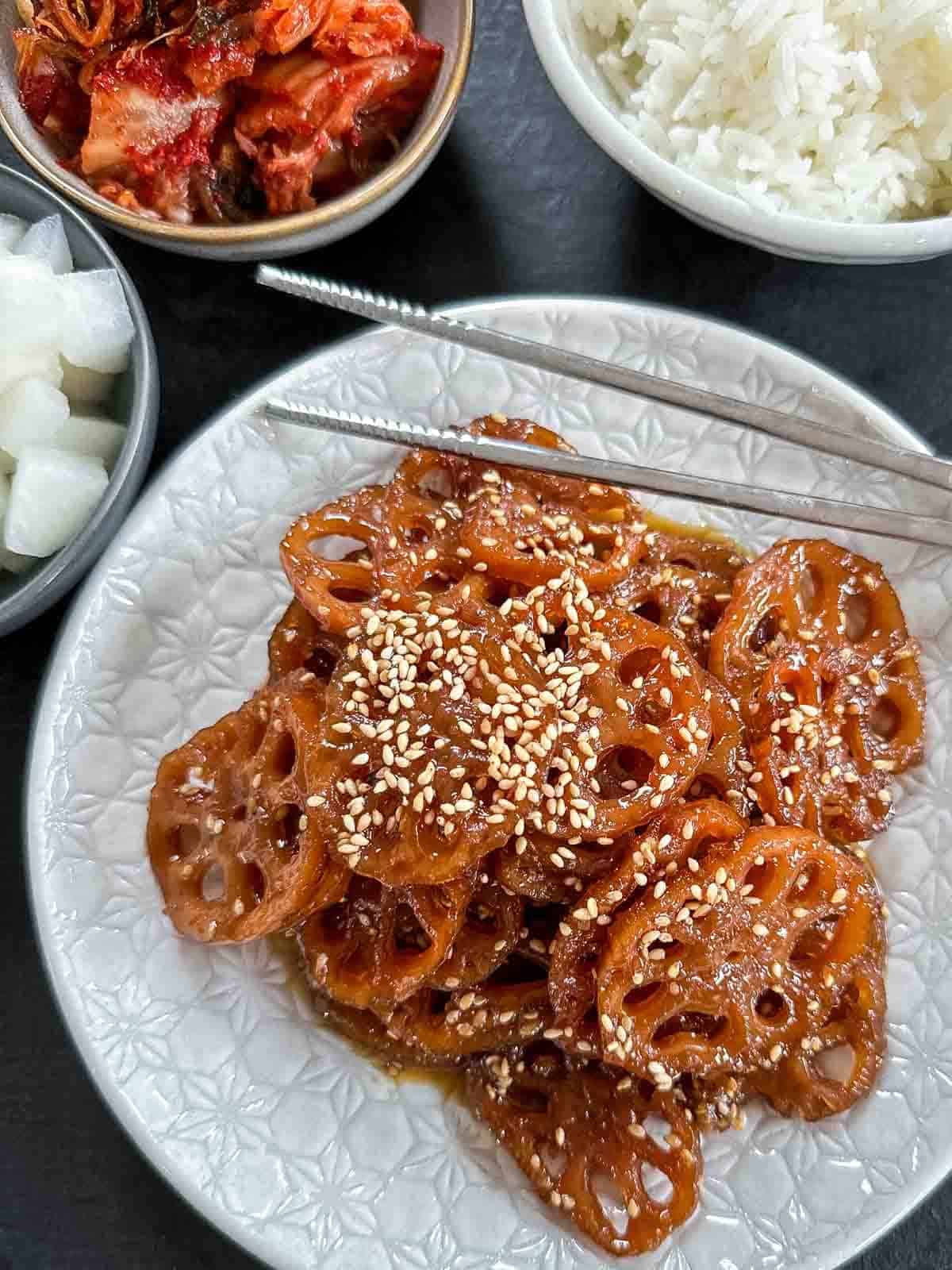
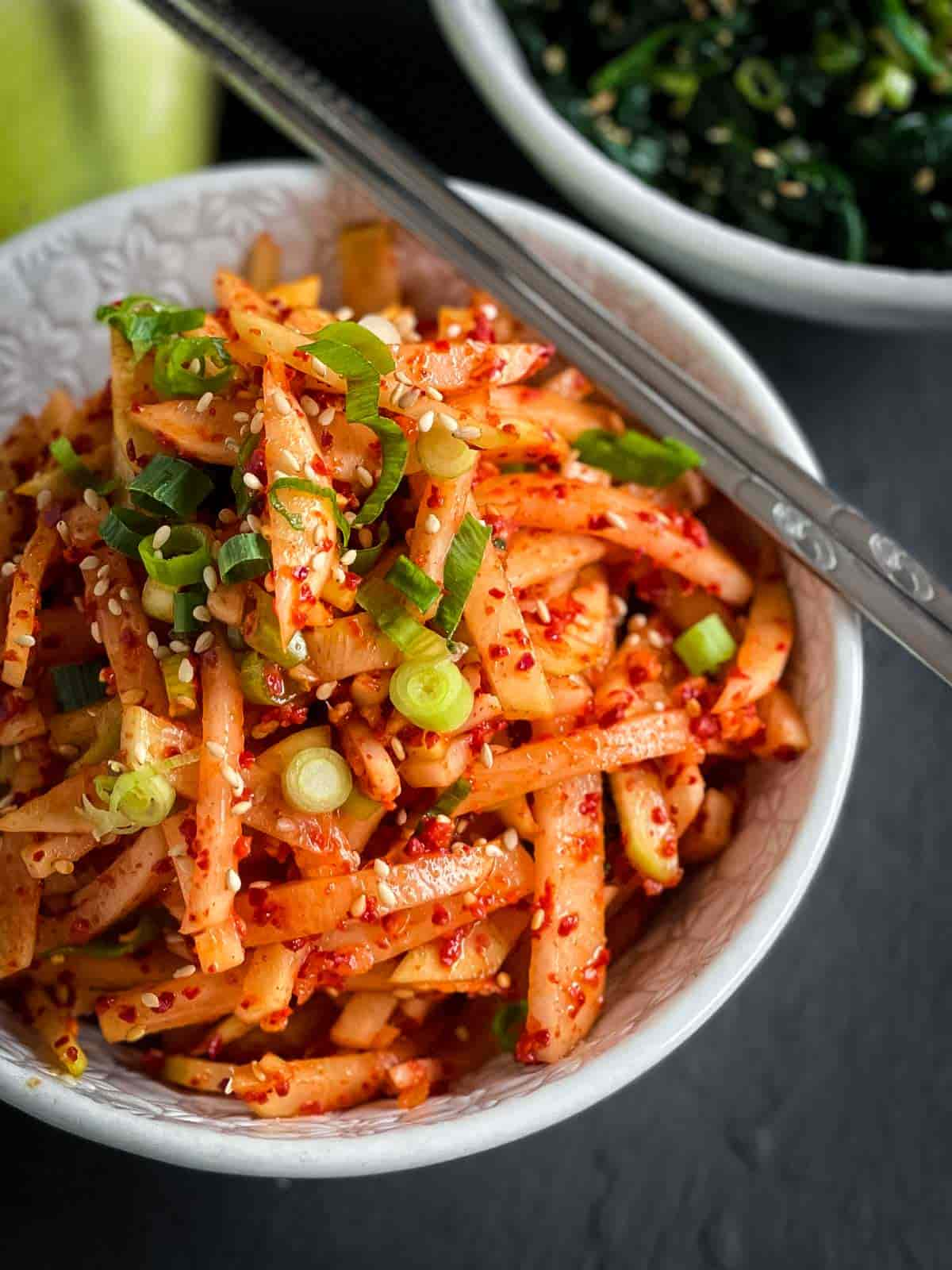
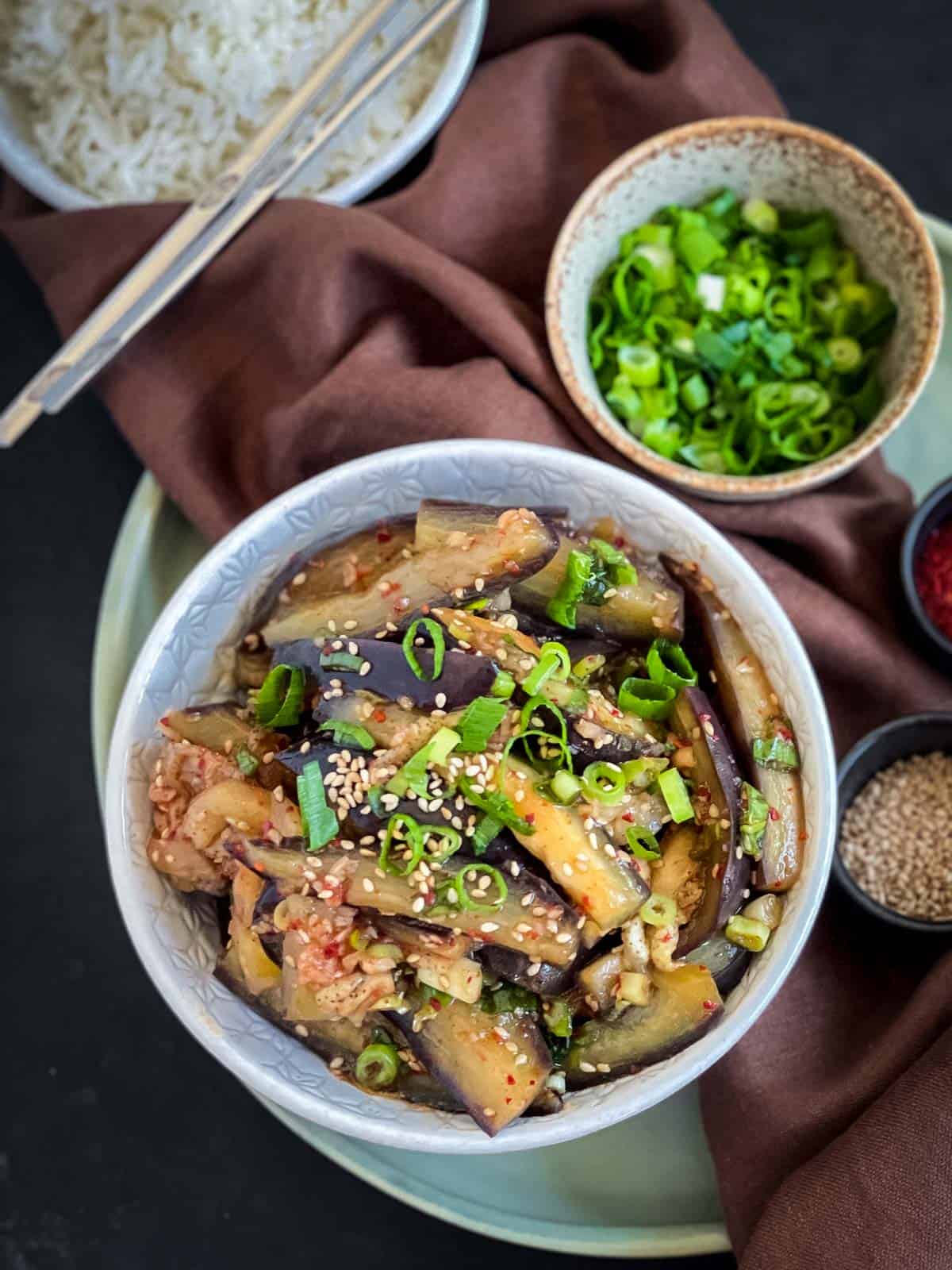
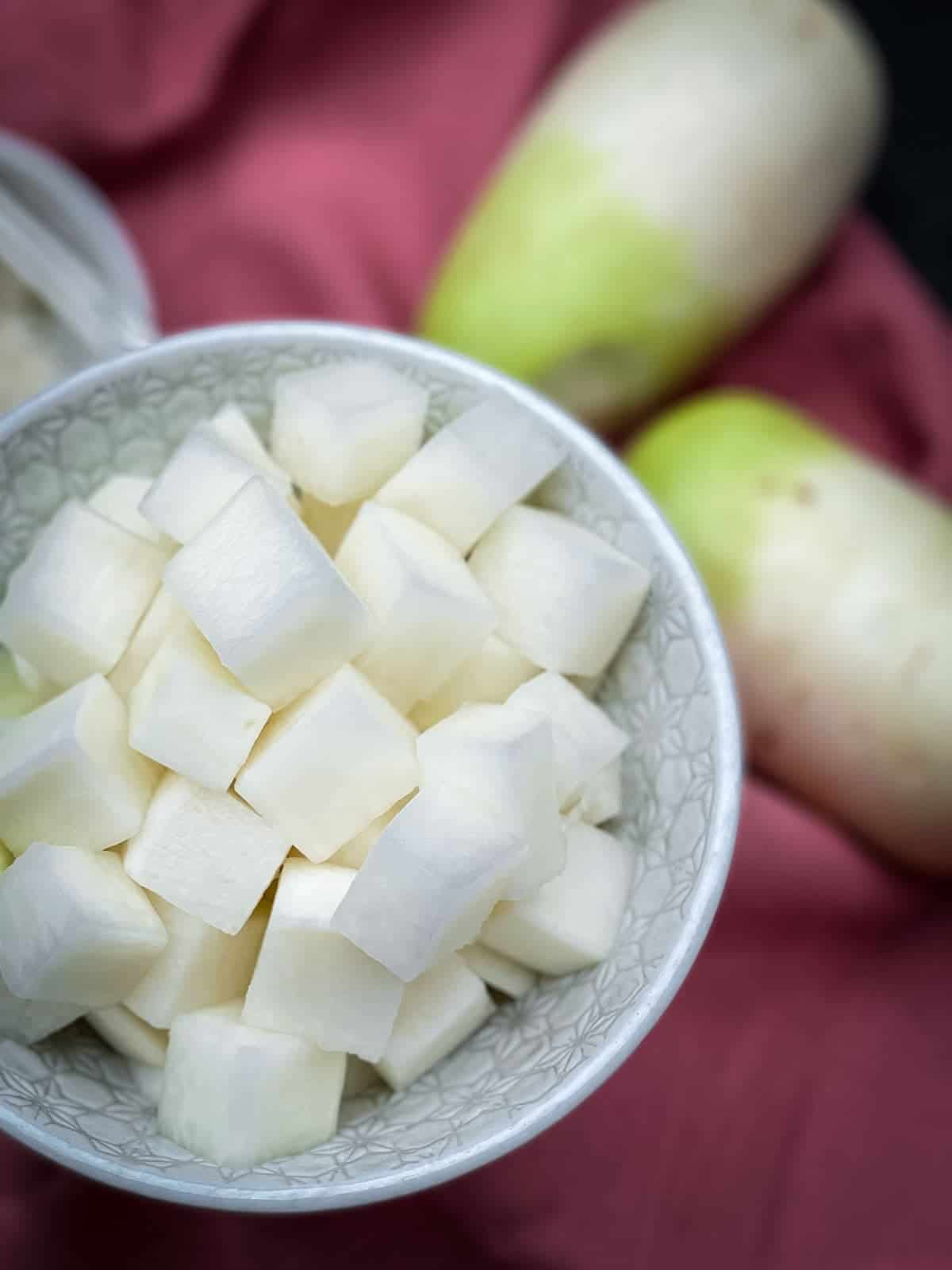
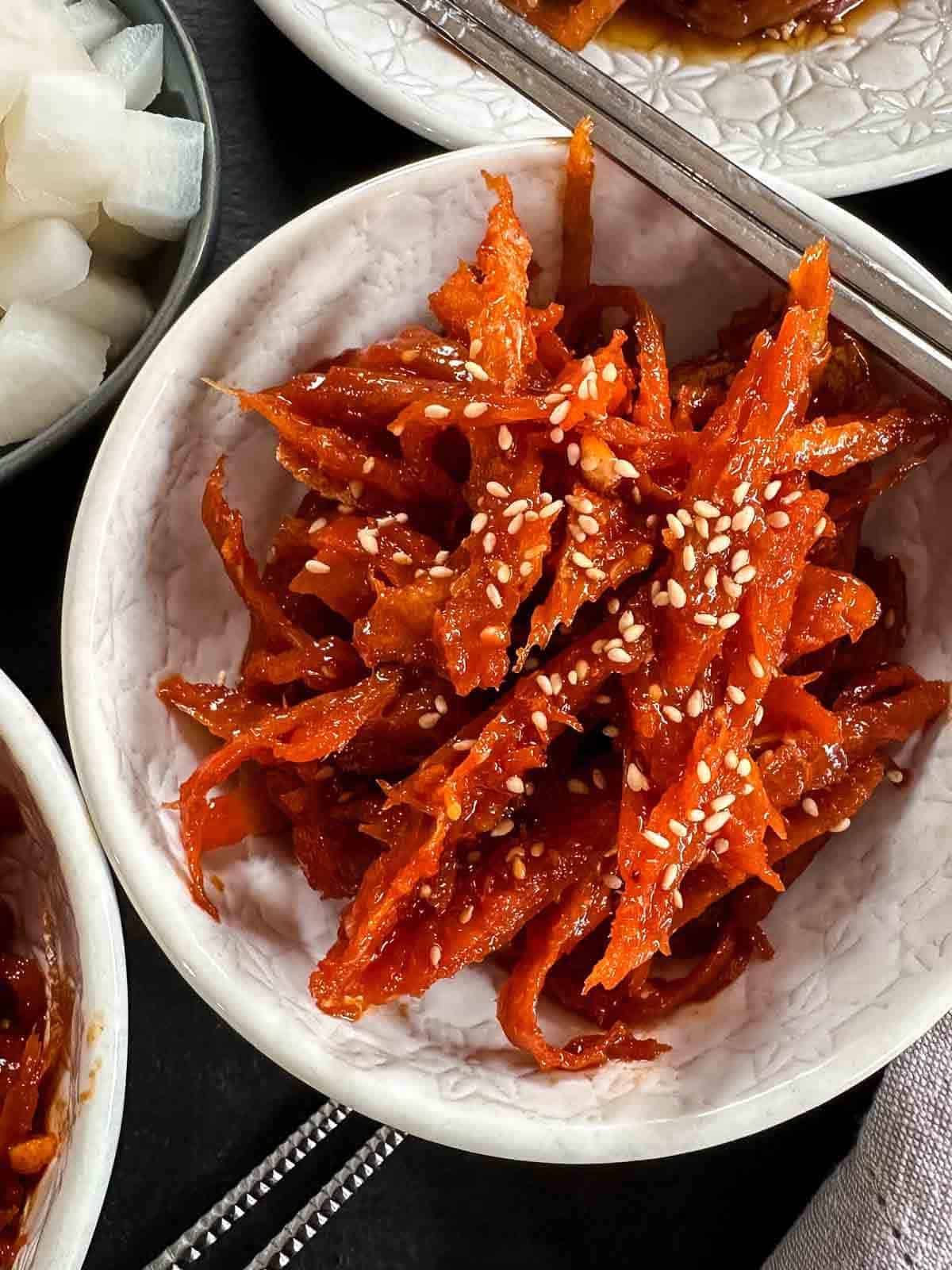
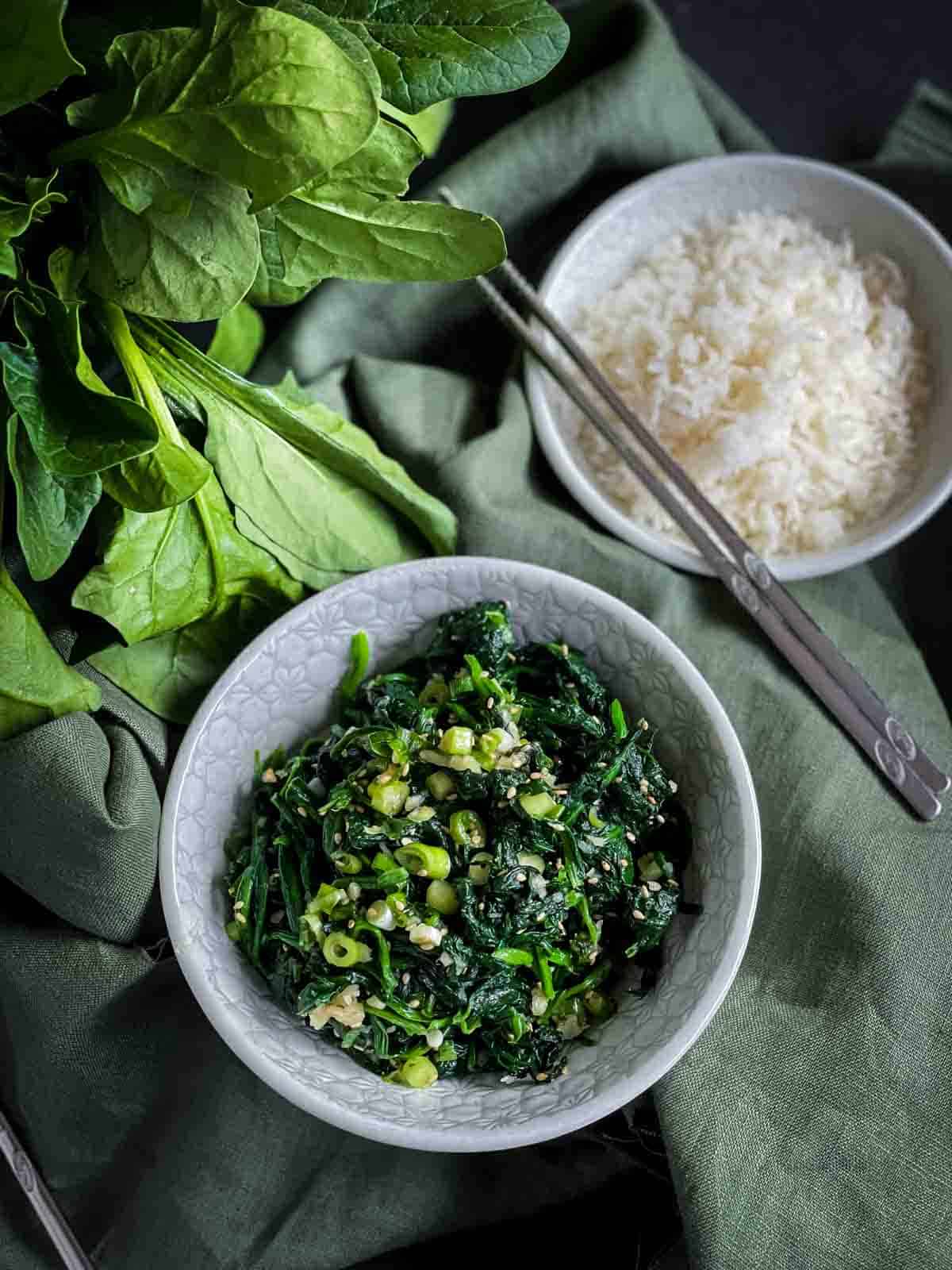
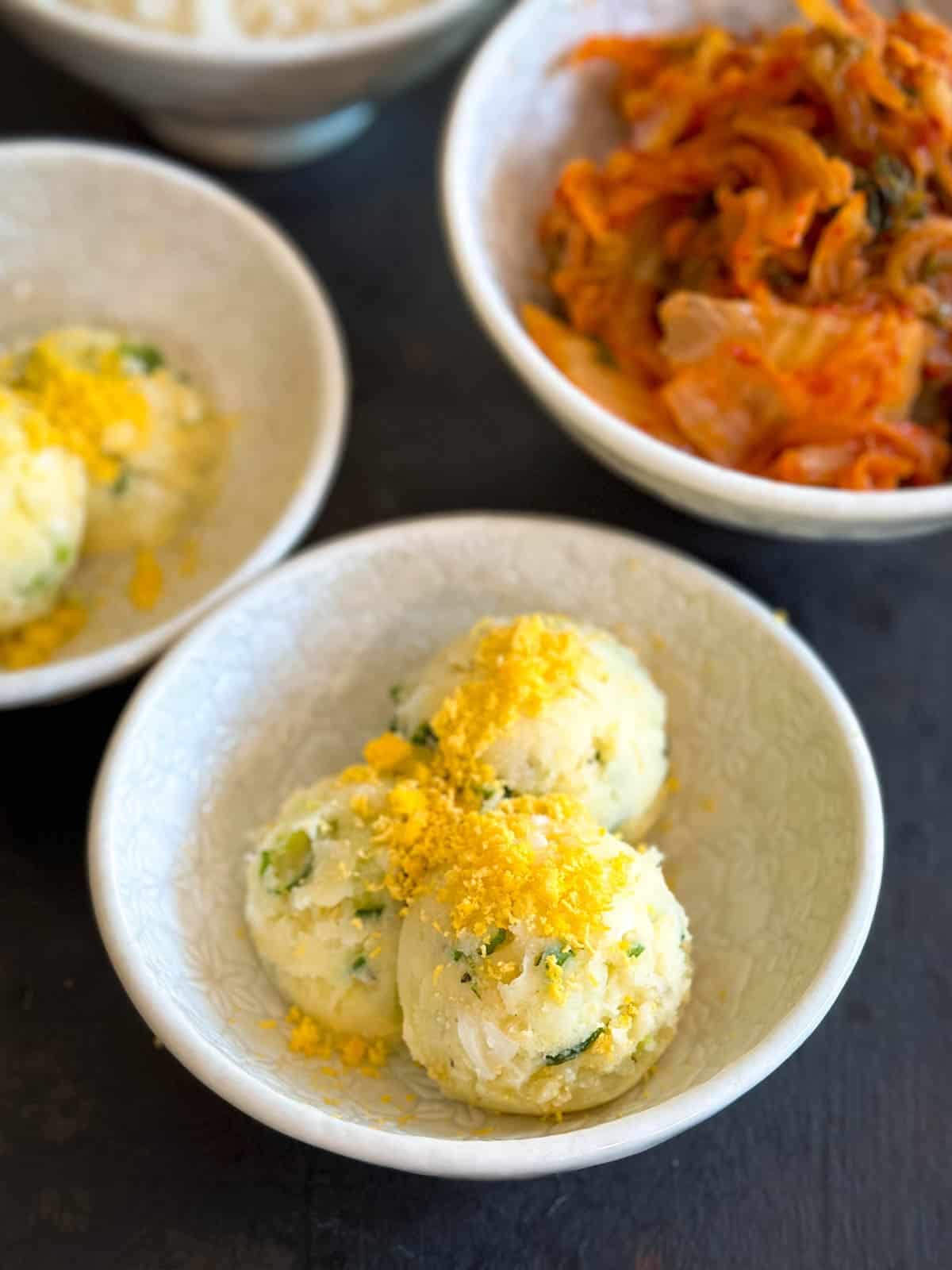
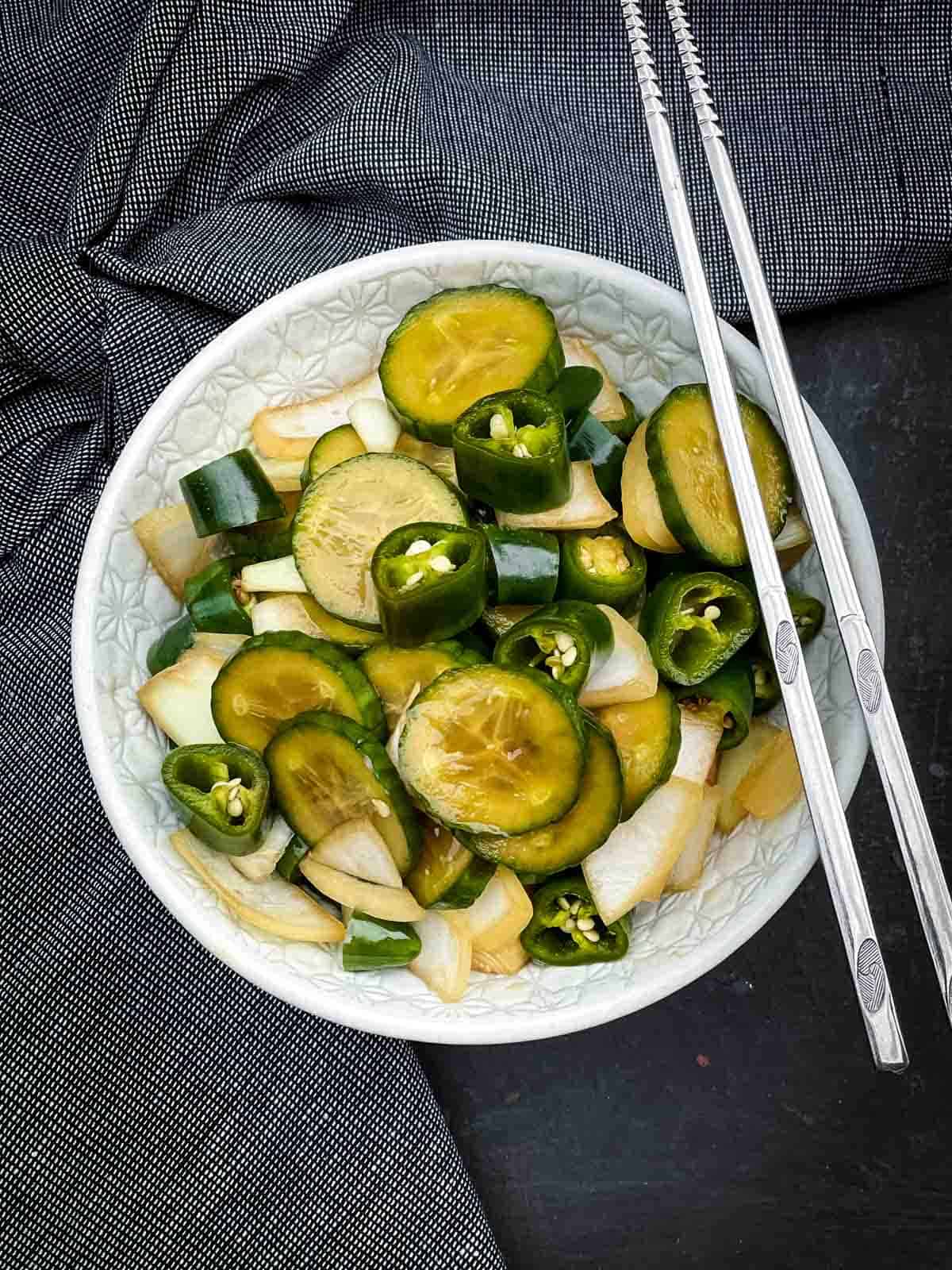
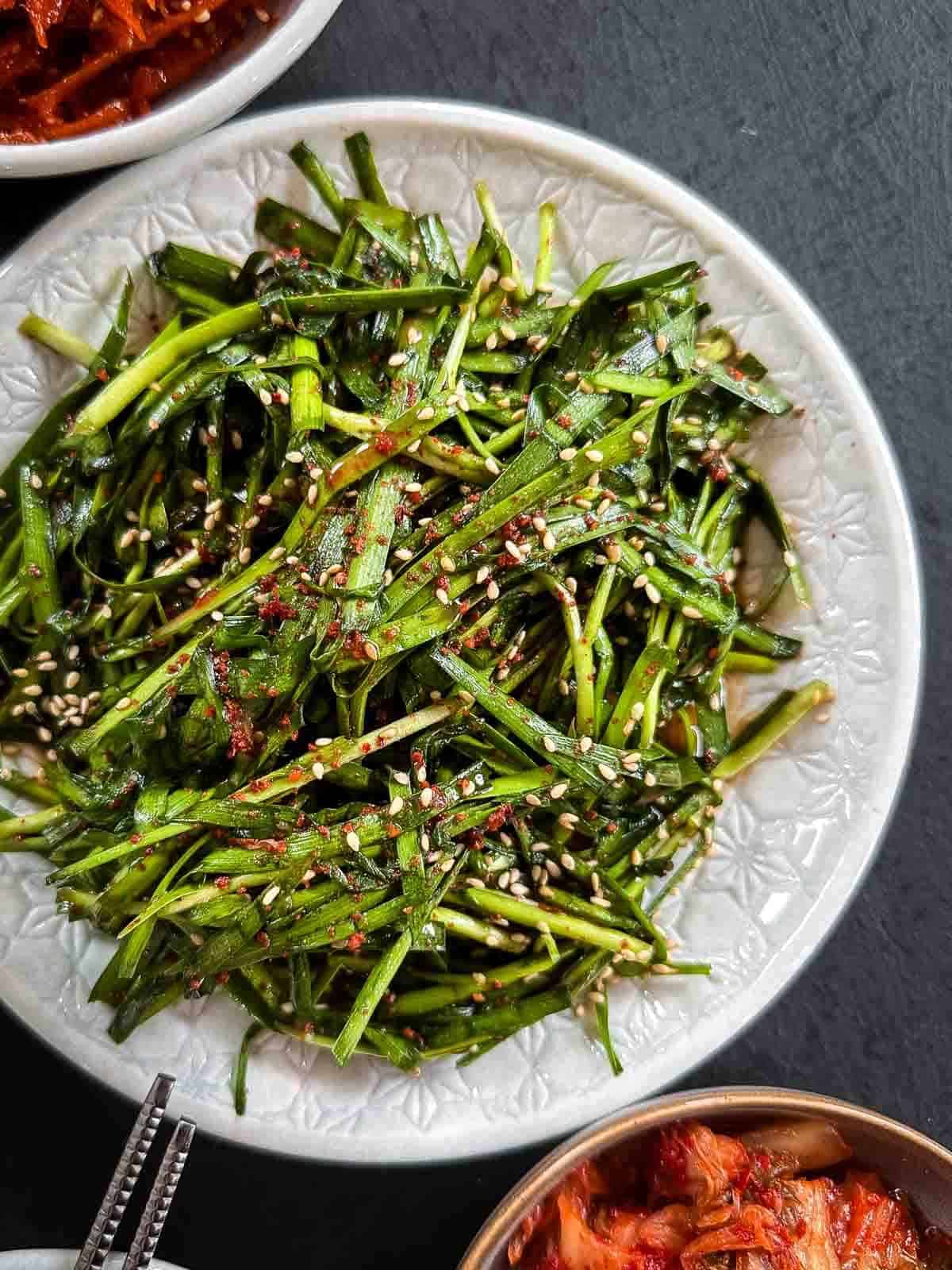
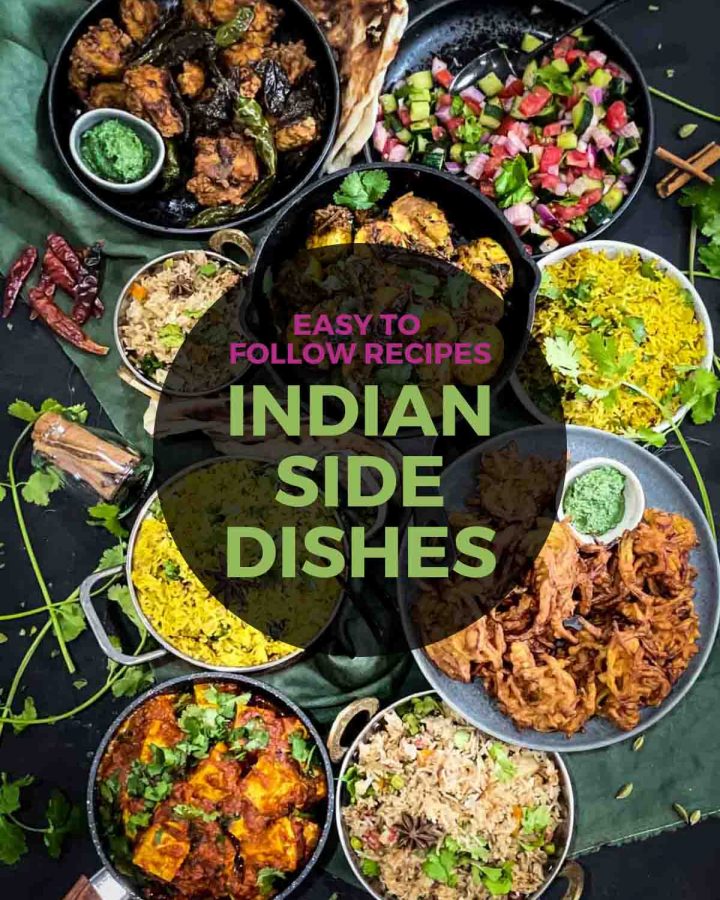

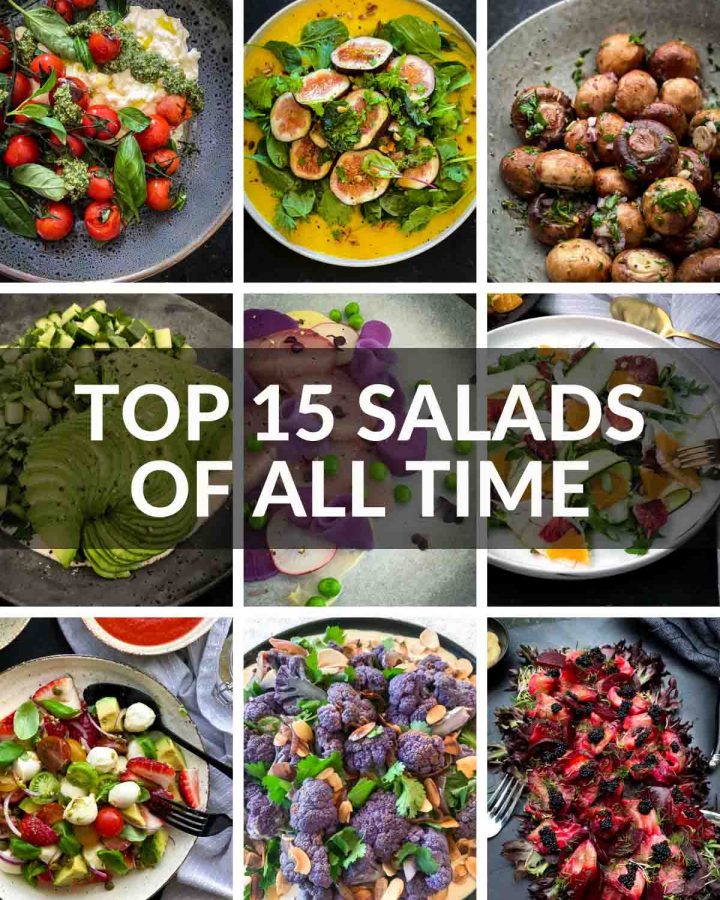
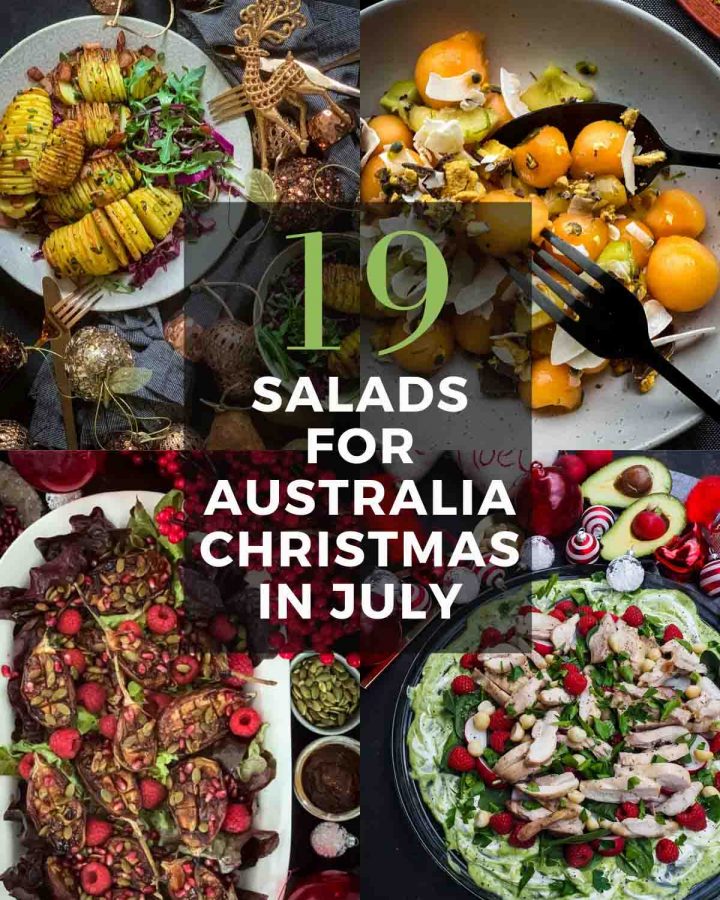
Seema
This is a very informative post. I loved reading through the details of it. I have a collection of chopsticks, now am curious if I have one from Korea!!
Cathleen
My old landlord used to have us over once a month and make Korean food and I loved it all!! I miss it now that I moved away, but I am glad you put this together so that I can try some of my favourite side dishes again!! 🙂
Andrea
Wow, so many fantastic side dishes. They do go so well with many different types of protein. Can’t wait to give them a try.
Mirlene
I love all the varieties here! I’m so intrigued that there are so many! I may have to try all of them one day!
The Devil Wears Salad
Wouldn’t that be the most amazing feast! Your family and friends will love you forever!
Anjali
These side dishes all look so delicious I can’t decide which one to try first! It might have to be both the braised potatoes and zucchini! Yum!
The Devil Wears Salad
To be honest we were like that too. Which recipe goes in the test kitchen first so we can eat them as we go! Almost didn’t have any left for photos. LOL.
susan
I love all this great information. I had no idea the background from Buddhist tradition – and have been wanting to try my hand at kimchi. But I think I’ll try the spinach side dish first!
The Devil Wears Salad
The spinach side is a great starting point for sure! Enjoy the recipe and glad you found the history interesting!
Matt
I am a fan of anything pickled. Definitely gonna have to try some of these out!
The Devil Wears Salad
These are quick pickled recipes too so they are nice and easy. Make them today and you’ll be able to eat them the next day. Nothing too complicated at all.
Debra
Love this…I could live on side dishes alone and these are some really great recipes to choose from.
The Devil Wears Salad
We can too! Just with hot steaming rice!
Kay
I love the idea of many side dishes. All those fantastic Korean flavours to tantalise the taste buds. I need to try these out.
The Devil Wears Salad
We hope you do! Easy to find ingredients and easy to make too. Win win!
Megan Ellam
I love Korean cuisine and there are so many recipes here that I have pinned to try later. Thanks for sharing.
Jacqueline Meldrum
I love small plates of food like this where you can taste lots of different flavours. Such fun and so tasty. Love it!
The Devil Wears Salad
Thank you! You’re absolutely right. A real treat for the palate.
The Devil Wears Salad
You welcome Megan! We love Korean too and we make these side dishes on a regular basis. Never gets old!
Addie
This is such a great roundup of side dishes! They’re all so unique and flavorful!
The Devil Wears Salad
They sure are! Thought we would put it all in one place since you never really only make 1 banchan.
Alexandra
It has been fantastic to learn so much more about banchan! I love small dishes, as I always feel it means I get to try a lot of different things. I am a huge fan of Korean food, and I see many dishes I am looking forward to trying. The braised potatoes and soy bean dish are on the list to try soon!
The Devil Wears Salad
Thank you and glad you enjoyed reading some interesting things about Korean cuisine. Let us know how you go with some of the banchan!